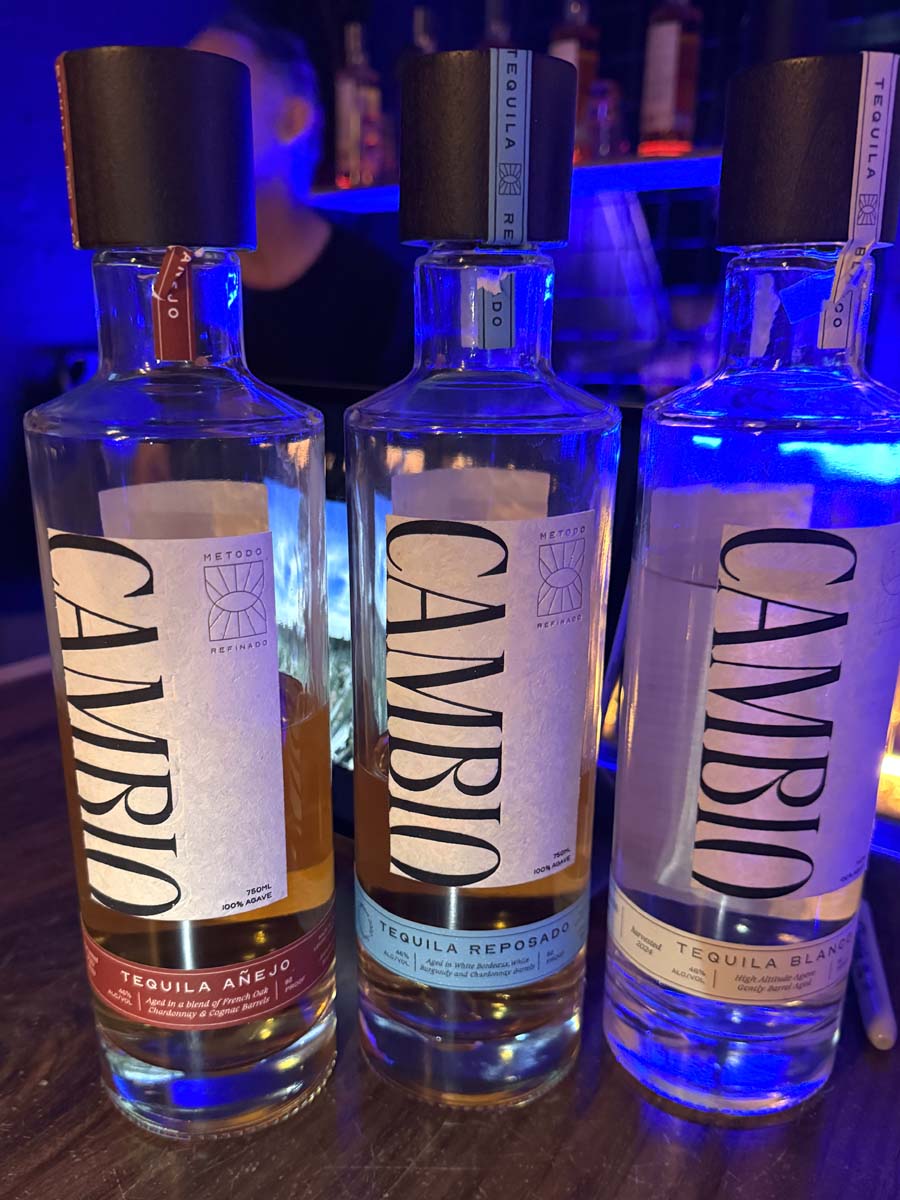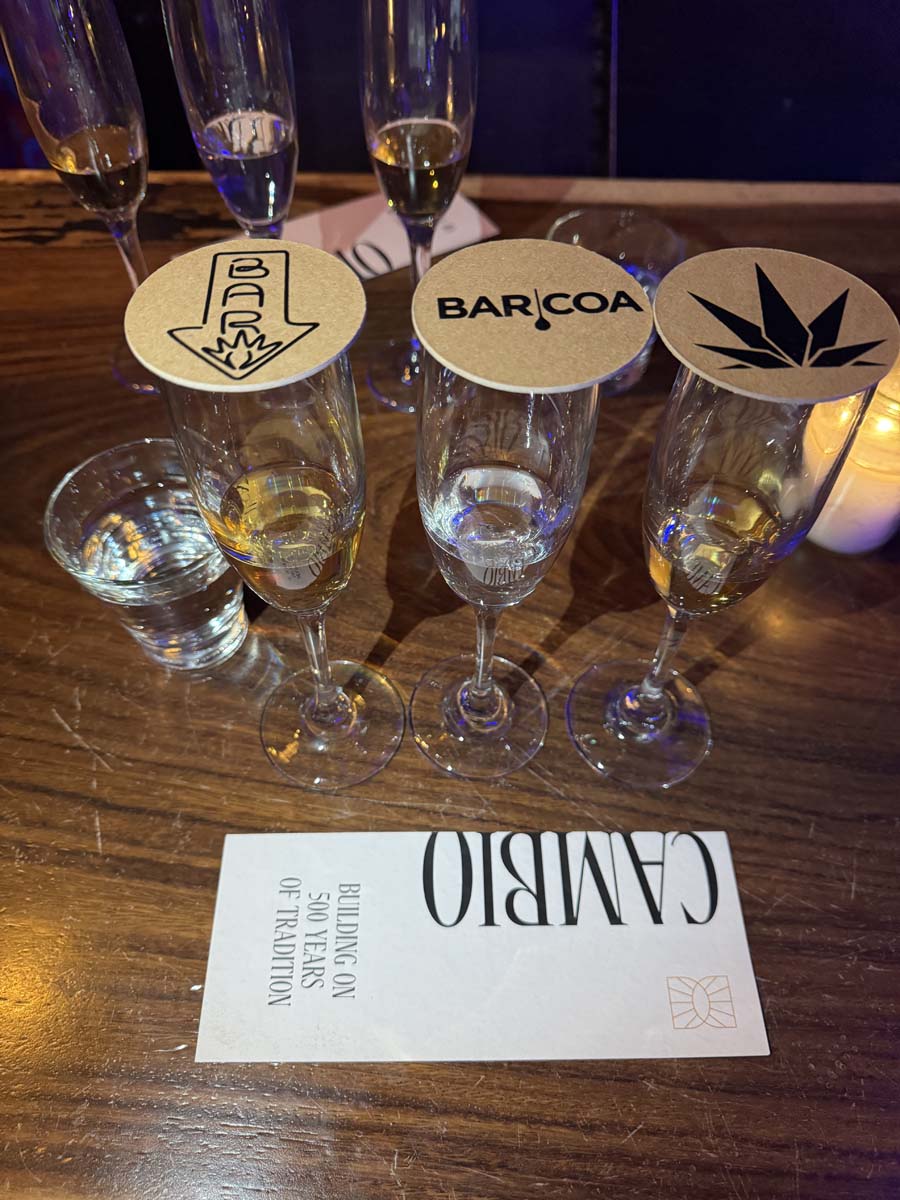I recently received an email from Dave Tyda, owner of BARCOA Agavería in downtown Phoenix. Dave and I go back a few years—I first met him when I interviewed him for A Taste of AZ magazine (see interview here), and we’ve kept in touch ever since. He’s one of the most passionate and knowledgeable people I know when it comes to agave spirits, so when he told me he’d come across a tequila that was doing things he’d never seen before, I was intrigued.

The tequila was called Cambio, and Dave invited me to a tasting. I didn’t need much convincing. Hubby and I booked a Waymo (yes, those silly driverless cars…you have to try it!) and headed downtown to sip tequila on a warm Phoenix evening. Tough job, I know, but someone has to do it.
Cambio Tequila is the brainchild of Chef John des Rosiers, a classically trained chef and sommelier from the Chicago area who set out to reimagine tequila while honoring its deep-rooted traditions. After marrying into a large Mexican family with ties to Arandas, Jalisco, Des Rosiers began a journey that would challenge nearly every norm in the industry. “We are a completely traditional brand,” he said during the tasting. “Only brick ovens, only tahona, only wood fermentation, only copper stills, and only malolactic fermentation. There’s no brand anywhere that does all five.”


The tahona, a massive stone wheel used to crush roasted agave, is a hallmark of old-school tequila production. At Cambio, the agave is slow-cooked whole in brick ovens for four days (something Des Rosiers was told was impossible), then crushed in the tahona with cold water over three hours. This gentle method extracts sugars without bitterness, yielding a smooth and complex spirit.
Fermentation takes place in custom-built tanks with stainless steel exteriors and interiors lined with hand-fitted wooden staves—half made from Mexican pine, half from American white oak. Using four types of yeast and full malolactic fermentation, the 15-day process operates at 45–50°F, much colder than standard tequila fermentation (which I believe is closer to 85°F).

Their blanco, bottled at 92 proof, rests briefly in used French oak barrels to soften the edges and add complexity. A few drops of water reveal additional aromas, such as green pear and white peach. The reposado spends six months in a combination of used French oak barrels from Bordeaux and Burgundy, as well as re-toasted California Chardonnay barrels. Des Rosiers designed it to be “more like a baby Añejo than a traditional repo.” The añejo is a blend aged in three barrel types and finishes: third-use French oak (two years), raw French oak (13 months), and 30-year-old Limousin cognac casks (15 months).

Cambio’s commitment to purity extends to its production process: no chill filtering, no additives, no shortcuts. “Everything we did was hard,” Des Rosiers emphasized. In a traditional craft like tequila distilling, no doubt everyone thought he was just a crazy gringo. But this crazy gringo has some crazy good tequila. Did I walk away with a bottle for our bar? You bet. Which one did I choose? The blanco, because I felt it would be great in cocktails and could also stand on its own. On that note, I am off to make a paloma with ruby red grapefruit picked from my very own citrus garden. Should you crave some tequila recipes this weekend, check out some of my older posts here and here. Plus, I found this great post from 2013 and our trip to Tequila. Cheers and Happy Memorial Day! xoM










You must be logged in to post a comment.